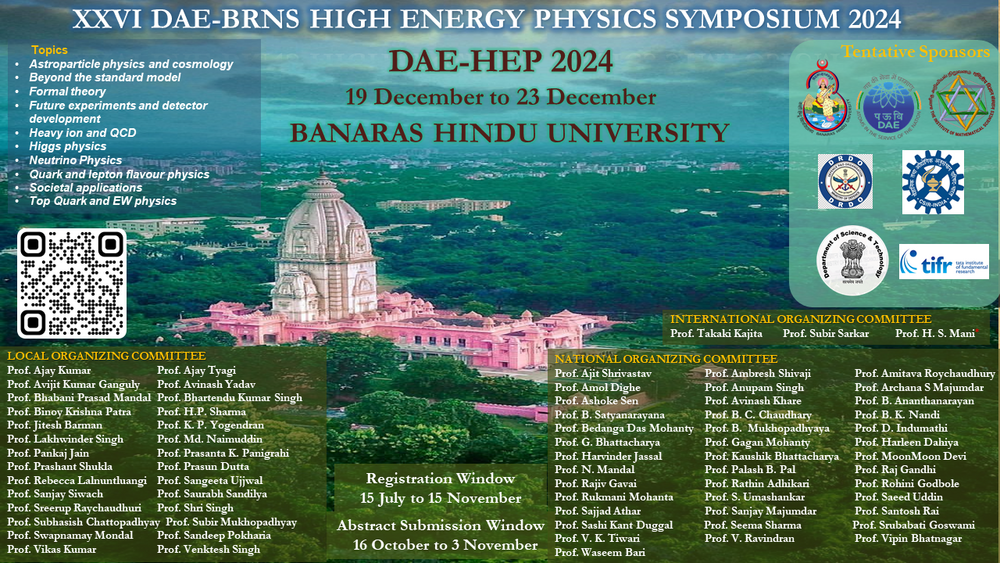Speaker
Description
We examine the $Y=0$ real Higgs triplet model. In addition to the SM Higgs, it contains a $CP$-even neutral Higgs ($\Delta^0$) and two charged Higgs bosons ($\Delta^\pm$), which are quasi-degenerate in mass. We first study the theoretical constraints from vacuum stability and perturbative unitarity and then calculate the decay widths of $\Delta^0$ and $\Delta^\pm$, including the loop-induced modes $\gamma\gamma$ and $Z\gamma$. In the limit of a small mixing between the SM Higgs and $\Delta^0$, the latter decays dominantly to $WW$ and can have a sizable branching ratio to photons. The model predicts a positive definite shift in the $W$ mass, which is in agreement with the current global electroweak fit. At the LHC, it leads to a $(i)$ stau-like signature from $pp\to \Delta^+\Delta^-\to \tau^+\tau^-\nu\bar\nu$, $(ii)$ multi-lepton final states from $pp\to \gamma^*\to \Delta^+\Delta^-\to W^+W^-ZZ$ and $pp\to W^{*} \to \Delta^\pm\Delta^0\to W^\pm Z W^+W^-$ as well as $(iii)$ associated di-photon production from $pp\to W^{*} \to \Delta^\pm(\Delta^0\to\gamma\gamma)$. Concerning $(i)$, the reinterpretation of the recent stau search by ATLAS and CMS excludes $m_{\Delta^\pm}<110$\,GeV at 95\% CL. From $(ii)$, some of the signal regions of multilepton searches lead to bounds close to the prediction cross-section, but electroweak scale masses are still allowed. For $(iii)$, the recast of the associated di-photon searches by ATLAS by performing a combined log-likelihood fit of signal and background to data finds that out of the 23 signal regions provided by ATLAS, 8 provide relevant limits on Br$(\Delta^0\to\gamma\gamma)$ at the per cent level. Interestingly, 6 signal regions show excesses at around 152\,GeV, leading to a non-zero di-photon decay rate with $\approx4\sigma$ significance.

